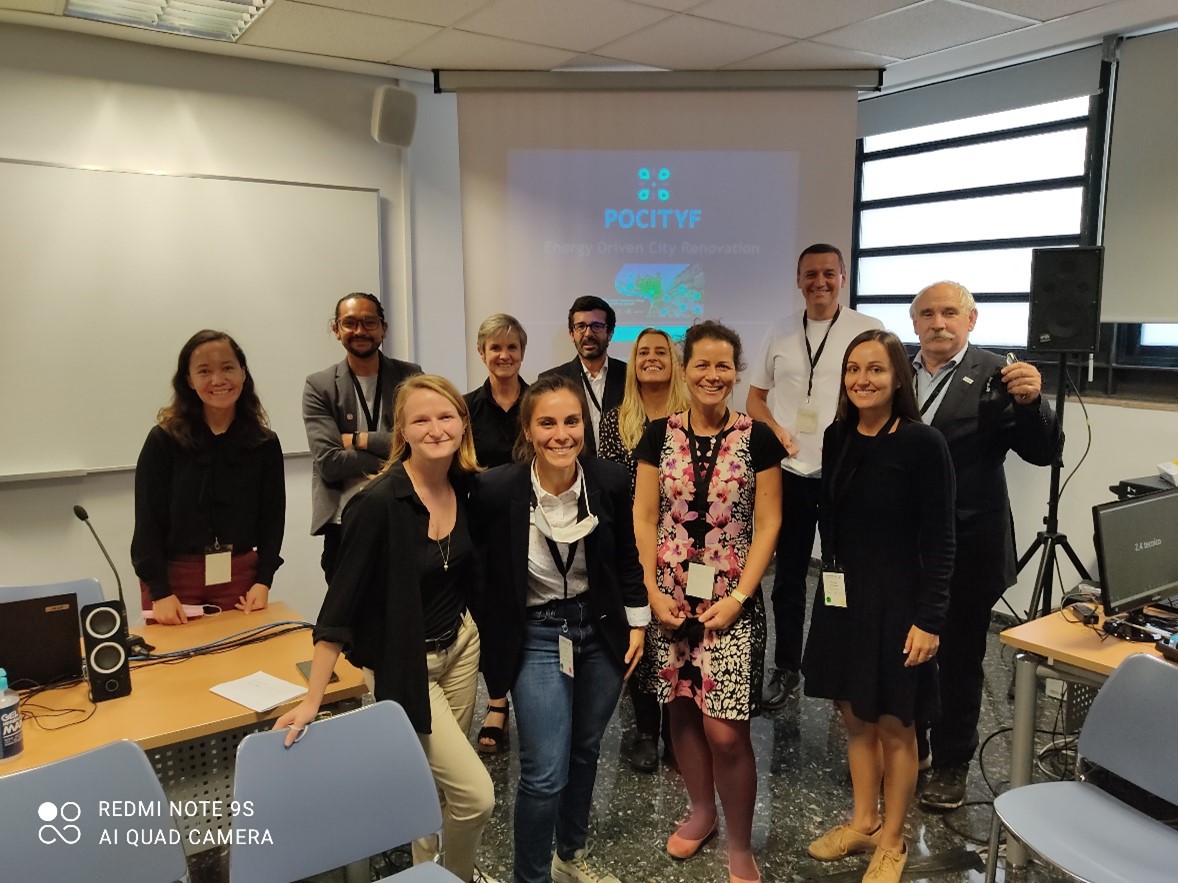The 4th meeting of Eurada’s working group on Smart Heritage Cities formed within the framework of the POCITYF project, took place as a hybrid meeting during Agorada+ 2021 on the 28th of October in Valencia, Spain. After almost two years of online meetings, members of the working group were elated to have the opportunity for an in-person meeting. The topic of discussion was decided after an online vote by members and the meeting was designed to be a collaborative discussion. It was decided that the impact of innovative energy solutions in cultural heritage sites and buildings would be a great point of discussion and several questions were formulated to address sub-topics such as Energy Innovation, Citizen Involvement, and Energy Communities among others. Tom Huizer and Jan Willem Veeningen from De Groene Grachten in Amsterdam were invited to join as online speakers and to answer the question related to Energy Innovation: What have been the most difficult technical aspects of integrating solutions in cultural heritage buildings? To answer the question, they introduced their Green Menu Platform: a digital twin with information regarding historic buildings and how to rehabilitate them. The platform has a lot of visual information (helpful towards citizens engagement), is user friendly, presents several solutions for comfort and energy efficiency, and has the available/existing regulations.
Tom and Jan’s presentation was followed by an open table discussion for participants to share their opinion and experience. Representatives from Evora in Portugal, one of POCITYF’s lighthouse cities, shared that the biggest challenge in their municipality is to find solutions and materials that meet very strict regulations while improving the energy sustainability of the (heritage) buildings. It must be considered that for buildings located in the historic centre of Evora's city, the new solutions must guarantee the preservation of the main facades (whether in terms of architecture, materials, and design). As an example, traditional tiles made of clay in Evora will be replaced with solar shingles and it was a prerequisite to installing shingles that these have the same appearance in terms of color and shape/design as the existing traditional ones.
On the other hand, representatives from city of Granada shared that the city is protected by UNESCO. Therefore, it is not possible to change the design of buildings’ facades. They are working instead with citizens regarding sustainable solutions: mobility (bikes), install innovative solutions on buildings outside the regulatory questions. Meanwhile POCITYF’s other lighthouse city, Alkmaar in the Netherlands, is envisioned to be energy positive by next year. In a first stage, an investment was made in renewable energy production outside the historic center and then, on a second stage, an intervention is planned for the buildings that are located in the historical centre.
After discussing Energy Innovation, a question regarding Citizen Involvement was introduced. Specifically, How can we engage “non driving” citizens to participate in the transition, and ensure no one is left behind? The concept that a gap between knowledge and behaviour exists was introduced. Practical examples were given during the meeting to reduce this gap: promote sustainable shops, stimulus through information, having a better understanding of sustainability in mobility (e.g. motto "leave your street"), sharing through digitalization, mobility websites, application (app) to encourage students to count km and show the saved CO2 emissions). Mobility is one of the most approachable topics to engage with citizens and make them more aware of sustainability problems. It results in a high chance for behaviour change towards more sustainable choices.
One of the main conclusions through the shared experiences is that there is a cultural difference between citizen’s engagement from city to city and how to effectively communicate with them. What works in one city may not work in a different one.
Due to time constraints, questions that were originally planned to be discussed during this meeting will be the topic of upcoming WG meetings such as:
- Social engagement, how to break the gap between knowledge and behaviour;
- Strategies to fix occupants in the city center when they prefer to live outside the (historical) centre (e.g. Evora city -> citizens prefer to live outside the city’s historical centre)
- Citizens on science
As the meeting took placei n the historic city of Valencia, participants of the meeting were also treated to a walking tour of Valencia’s historical sites such as La lonja de la seda and torres de Serranos among others.
